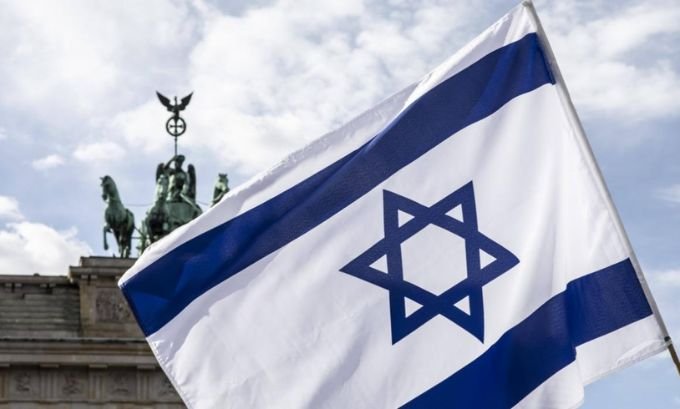The creation of the State of Israel in 1948 marks one of the most significant moments in recent world history. This development was not the result of one single event, but a sequence of political, ideological, and military movements. In brief, Israel was officially declared as a nation after the expiration of the British mandate in Palestine, immediately facing military opposition from surrounding Arab nations. To fully understand how Israel was established, it is essential to look at both the deeper historical currents and the pivotal events that shaped its formation.
Table of Contents
The Origins of a State: How Israel Was Established
At its heart, the story of how Israel was established is a narrative of people seeking self-determination in the wake of centuries of persecution and displacement. Yet it’s also a story of international maneuvering, colonial legacies, and the human consequences of competing national aspirations.
The Rise of Modern Zionism
The idea of returning to the land of ancient Israel has deep roots in Jewish religious tradition, yet modern Zionism transformed this hope into an organized political movement. Many Jews in 19th-century Europe faced exclusion, violent pogroms, and state-sanctioned discrimination. In this climate, a new generation of Jewish thinkers began to believe that only a permanent, sovereign state could guarantee their safety and cultural survival.
Among the most important of these visionaries was Theodor Herzl, an Austro-Hungarian journalist and playwright. After the Dreyfus Affair—a scandal in which a Jewish officer in the French Army was wrongly convicted amid a surge of antisemitism—Herzl became convinced that assimilation was impossible and that the Jewish people needed to “return” to their historical homeland. His 1896 book, Der Judenstaat (“The Jewish State”), helped transform an ancient longing into a political goal.
Herzl didn’t simply write about Zionism; he took practical steps. In 1897, he convened the First Zionist Congress in Basel, Switzerland, where Jewish leaders from across Europe and beyond voted to work toward “the establishment of a home for the Jewish people in Palestine secured by public law.” This congress established key Zionist institutions, including fundraising organizations like the Jewish National Fund and mechanisms for land purchase in Palestine, which would later be pivotal in shaping Jewish settlement patterns.
Early Zionist pioneers began emigrating to Ottoman-controlled Palestine in the late 1800s and early 1900s, often founding agricultural communities—kibbutzim and moshavim—where Hebrew language and culture flourished. These settlements were not just farms; they were expressions of a renewed national identity.
Britain’s Imperial Promise: The Balfour Declaration
During World War I, the British Empire found itself in need of allies and international support. Recognizing the influence of global Jewish communities and aiming for strategic control in the Middle East, Britain issued the Balfour Declaration in 1917. This brief but transformative document stated:
“His Majesty’s Government view with favour the establishment in Palestine of a national home for the Jewish people, and will use their best endeavours to facilitate the achievement of this object…”.
Why did Britain support such a dramatic change in Palestine’s status?
- Strategic Interests: Palestine was a key link between Europe and Asia, especially regarding access to the Suez Canal, which was vital for British imperial routes.
- Diplomatic Calculations: The British sought to win favor with Jewish communities in the United States and Russia, hoping to bolster the Allied war effort.
- Effective Lobbying: Zionist leaders like Chaim Weizmann established contacts in the British government. Weizmann’s cultural diplomacy and practical achievements—he was a noted chemist whose work benefited British munitions—brought Zionist aspirations to the attention of top policymakers.
The Balfour Declaration did not guarantee a Jewish state—it was purposefully ambiguous. Yet, it signaled international recognition of Zionism for the first time and spurred new waves of Jewish immigration into Palestine.

A Personal Perspective: Understanding the Human Element
It’s common to view major world events through maps and statistics. But the story of how Israel was established is, at its core, a story about millions of ordinary people—Jews, Arabs, Bedouins, and others—whose lives changed forever.
Several years ago, while conducting historical research, I traveled to Haifa, Tel Aviv, and a Palestinian refugee camp in Jordan. Each conversation offered glimpses into parallel and intersecting histories. One elderly Palestinian man showed me a rusted iron key he said fit the front door of his family’s home in Jaffa, left behind in 1948. The apartment was long gone, but he spoke about his mother’s garden, their orange trees, and his certainty that one day, he or his descendants would return.
Conversely, a Jewish grandmother showed me faded photographs of her Hungarian parents, who survived Auschwitz and resettled in the battered, struggling communities of British Mandate Palestine. For her family, and many more like them, the new state represented salvation—a rare chance to build a life after experiencing the unthinkable in Europe.
The price of statehood was immense for both Palestinians and Jews: birth of one nation, displacement for another. Discussions about the Palestinian Nakba—meaning “catastrophe” in Arabic—remind us that historical milestones carry very different meanings depending on perspective. While Israeli Independence Day is marked with parades and public celebrations, Nakba Day is one of remembrance and mourning for lost homes and communities.
From Mandate to Partition: Setting the Stage for Conflict
The end of World War I led to the collapse of the Ottoman Empire, with victorious Allied powers carving up the Middle East. The League of Nations Mandate for Palestine placed the region under British administration beginning in 1920, handing London legal stewardship over both Jews and Arabs living in Palestine.
This arrangement incorporated the Balfour Declaration’s promise, giving it international legal weight. For Jewish leaders, it was an opportunity to accelerate nation-building; for Arabs, it was the beginning of a struggle against both foreign rulers and the perceived loss of their homeland.
British policy often vacillated between trying to satisfy both communities and, in practice, appeasing neither. Jewish immigration soared, especially in the 1930s as Jews fled growing fascism and impending genocide in Europe. Cities like Tel Aviv expanded rapidly, new kibbutzim sprang up, and Hebrew was revived as a spoken language.
However, with change came conflict. Arab leaders grew increasingly alarmed, believing that Palestinians were being displaced. The Arab Revolt of 1936–1939 was a watershed moment: widespread strikes, attacks on infrastructure, and open rebellion against British rule and Jewish settlement. The British responded with brutal force, including mass arrests, executions, and village demolitions—shifting public opinion within both Jewish and Arab communities.
As unrest continued, British officials created commissions to seek solutions. The Peel Commission (1937) recommended partitioning the territory and moving populations by force, a plan rejected by most Arab leaders and only partially accepted by some in the Zionist movement. The British White Paper of 1939 restricted Jewish immigration at a time when European Jews faced extermination, straining British-Jewish relations to the breaking point.
World War II changed everything. The Holocaust killed approximately six million Jews. Survivors flocked to displaced persons camps and clamored to reach Palestine, though British authorities, wary of violence and Arab opposition, maintained strict immigration quotas. Smuggling operations—sometimes called Aliyah Bet—became legendary, such as the saga of the ship Exodus 1947.
Exhausted by postwar debt, violence in Palestine, and colonial commitments globally, Britain announced in 1947 that it would end its mandate, turning the issue over to the United Nations.

The UN Partition Plan and Its Aftermath
In November 1947, the UN proposed splitting Palestine into independent Jewish and Arab states, with Jerusalem and Bethlehem under international control—known as the United Nations Partition Plan (Resolution 181). The plan aimed for pragmatic compromise:
- Jews, one-third of the population and owning less than a tenth of the land, would receive approximately 56% of Palestine.
- Arabs would receive 43%.
- Jerusalem was to remain international.
Jewish leaders—including David Ben-Gurion—accepted the plan, seeing it as a crucial first step. Many Zionists also saw the plan as a base from which a state could be developed and strengthened. The Palestinian Arab leadership, while internally divided, overwhelmingly rejected the proposal, as did leaders from neighboring Arab states, believing it to be unjust and a violation of their right to self-determination in a land where they formed the majority.
Violence broke out almost immediately after the UN vote. Clashes, bombings, and retaliatory attacks polarized communities further, wiping out any hopes for peaceful coexistence before the British withdrawal.
The 1948 War and the Declaration of Independence
On May 14, 1948, just before the British pulled out, David Ben-Gurion declared the independence of Israel at a museum in Tel Aviv. Within hours, U.S. President Harry Truman granted diplomatic recognition.
The next day, neighboring states Egypt, Transjordan (Jordan), Syria, Lebanon, and Iraq launched a full-scale invasion. This marked the onset of the 1948 Arab-Israeli War (sometimes called the War of Independence by Israelis or al-Nakba by Palestinians).
How did Israel’s forces prevail?
- Unified Command: Under Ben-Gurion, the Jewish Agency managed to unify disparate paramilitary groups, including the Haganah, Irgun, and Lehi, into a single fighting force soon known as the Israel Defense Forces (IDF).
- Combat Experience: Veterans from World War II, including Jewish Brigade soldiers, provided expertise. Many had fought under Allied command.
- Motivation and Morale: The struggle was existential for Jewish fighters—defeat would likely mean annihilation.
- Overseas Support: Despite an arms embargo, Jews secured weapon shipments, particularly from Czechoslovakia, providing Israel with critical supplies.
- Tactical Agility: The new state was able to shift resources rapidly and exploit divisions within the invading Arab militaries.
For the Arab states, several factors hampered their efforts:
- Lack of Unified Purpose: Each state had different priorities; some were more interested in controlling territory for their own gain than in supporting the Palestinians.
- Inferior Coordination: Divided command structures made joint operations difficult.
- Logistical Limitations: Some Arab armies were poorly equipped and trained.
The result was more than a military victory for Israel—it was the creation of a state. By 1949, after a series of armistices, Israel had expanded its holdings to about 78% of the former British Mandate. The West Bank was controlled by Jordan, while Egypt held the Gaza Strip. No Palestinian state emerged, setting the stage for decades of conflict.
The war had catastrophic consequences for Palestinian Arabs. Over 700,000 people—at least half the Palestinian Arab population—were forced to flee their homes or were expelled. Villages were depopulated and, in many cases, bulldozed or repopulated with new immigrants. This tragedy is commemorated by Palestinians and their descendants as the Nakba.
Comparison of Key Historical Plans for Palestine
| Plan | Year | Proposed by | Outcome for Jewish State | Outcome for Arab State | Result |
|---|---|---|---|---|---|
| Peel Commission | 1937 | Britain | A small state in about 20% of Palestine | A larger state joined with Transjordan | Rejected by Arab leadership, plan abandoned. |
| UN Partition Plan | 1947 | United Nations | 56% of Palestinian territory | 43% of Palestinian territory (Jerusalem international) | Accepted by Jewish leaders, rejected by Arab leaders. Led to civil war. |
| 1949 Armistice Lines | 1949 | Post-War Reality | Control of 78% of Palestine | West Bank annexed by Jordan, Gaza controlled by Egypt | Became Israel’s de facto borders until 1967. No Palestinian state. |
The Aftermath and Lasting Impact
Although the 1948 war officially ended with armistice agreements, peace was elusive. Hundreds of thousands of Jewish refugees, both Holocaust survivors and those expelled from Arab countries, arrived in Israel. The young state was stretched to its limits—building housing, creating jobs, and integrating people from a hundred different cultures.
Palestinian refugees, meanwhile, settled in makeshift camps in the West Bank, Gaza, Lebanon, Syria, and Jordan—many still stateless seventy years later. Successive wars prevented any meaningful efforts at resolution.

The Six-Day War (1967) further altered the map. Anticipating attacks from Egypt, Syria, and Jordan, Israel launched pre-emptive strikes and captured the West Bank (including East Jerusalem), Gaza Strip, Sinai Peninsula, and Golan Heights. For Israelis, this was an astonishing victory, doubling the nation’s territory and reuniting Jews with ancient sites like the Western Wall. For Palestinians, it began a new era of occupation.
The occupation of these lands remains one of the most contentious issues in world politics. It also drastically changed the demographics and geopolitics of the region, cementing the conflict as one of the world’s most intractable disputes.
Frequently Asked Questions (FAQ)
1. Who were the most important figures in Israel’s founding?
While many individuals played major roles, Theodor Herzl initiated the Zionist political movement, and David Ben-Gurion led Israel at its creation, serving as the country’s first prime minister. Other key contributors include Chaim Weizmann, Golda Meir, and Menachem Begin.
2. Why did the Zionist movement choose Palestine?
Palestine, called Eretz Israel in Jewish tradition, is the ancient homeland of the Jewish people, holding central importance in Jewish religion and culture.
3. What is the Balfour Declaration and why is it important?
Issued by the British government in 1917, the Balfour Declaration supported the establishment of a national home for the Jewish people in Palestine. It provided crucial international legitimacy for Jewish statehood aspirations.
4. What is the meaning of the Nakba?
Nakba means “catastrophe” in Arabic. For Palestinians, it marks the mass displacement and loss of home and homeland that accompanied the creation of Israel in 1948.
5. What was the role of the United Nations in Israel’s formation?
In 1947, the UN issued a plan to partition Palestine, creating separate Jewish and Arab states. This gave international legitimacy to Israel’s creation after Britain withdrew.
6. Was the United States responsible for the establishment of Israel?
While the U.S. recognized Israel immediately and provided later support, the establishment was primarily the result of Zionist organization and political efforts alongside support from other actors like the Soviet Union and regional dynamics.
7. How did the boundaries of Israel change after 1948?
Israel initially accepted the 1947 UN Partition borders but expanded during the 1948–49 war, then further after the Six-Day War (1967), capturing the West Bank, Gaza, Golan Heights, and Sinai Peninsula.
Conclusion
The establishment of Israel is a complex tapestry of ideological conviction, organizational skill, circumstance, and tragedy. From the vision of Theodor Herzl to the realpolitik of the Balfour Declaration, the construction of settlement institutions, the trauma of the Palestinian Nakba, and the seismic changes of the 1948 Arab-Israeli War and Six-Day War, every stage was shaped by layered motivations and competing visions of justice.
Understanding how Israel was established means recognizing its dual impact: the fulfillment of a generations-old dream for many Jews, and the start of a difficult and unresolved chapter for Palestinians. The events of these decades still reverberate through modern politics, peace talks, and daily life in the region.
For researchers, students, and anyone interested in global affairs, studying these related entities—the Balfour Declaration, Zionist movement, Ben-Gurion’s leadership, the Nakba, and the wars that followed—remains crucial to understanding not only the origins of Israel, but also the roots of ongoing challenges and hopes for peace.
About the Author
Dr. Alistair Finch is a historian and political analyst specializing in 20th-century Middle Eastern history. With over 15 years of field research in Israel, Palestine, and neighboring states, Dr. Finch received his Ph.D. from Oxford and has authored numerous peer-reviewed articles on the British Mandate and the roots of the Israeli-Palestinian conflict. His approach blends factual rigor with accessible storytelling in order to help audiences navigate complex historical issues.
For further reading on international perspectives and cultural insights, visit Tokyo Mart Store—a unique international marketplace connecting global communities.

